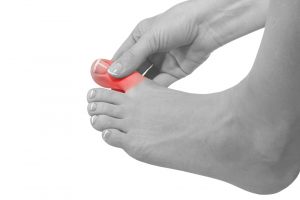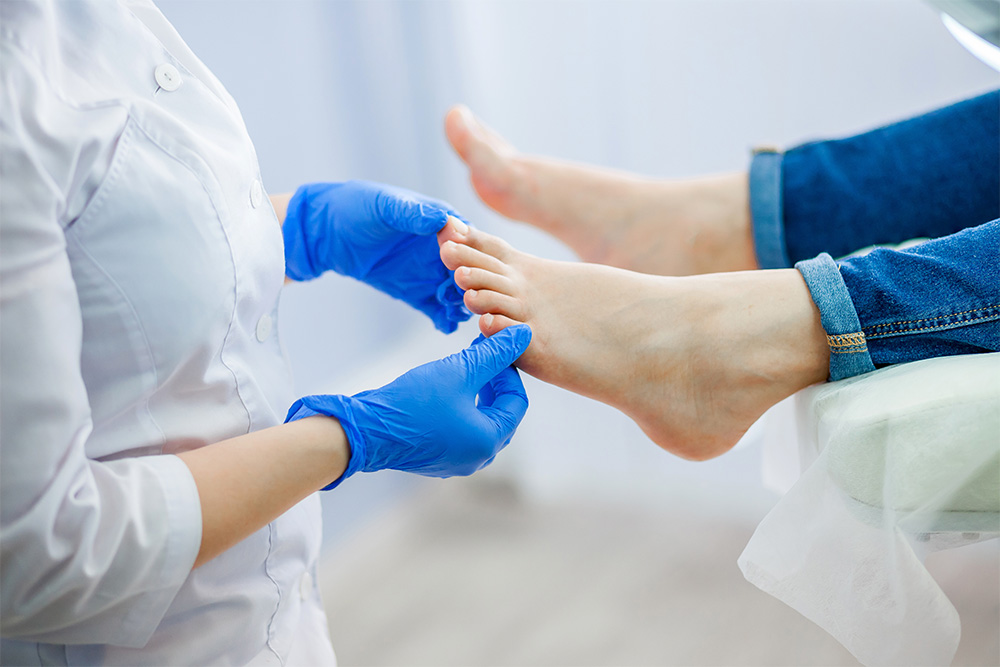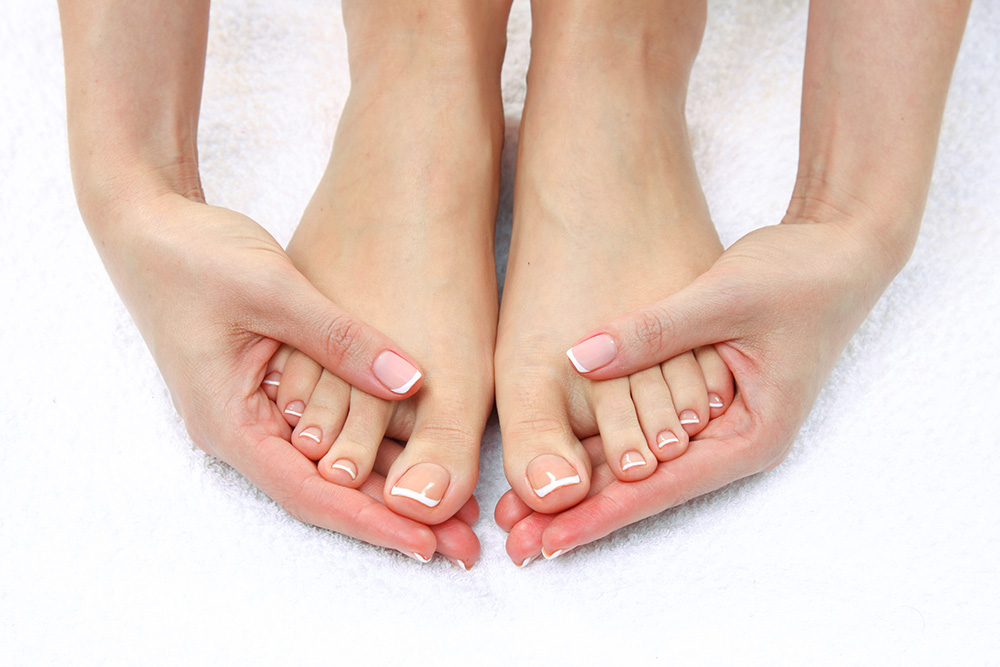
 If you are experiencing ingrown toenails, it is time you visited a My FootDr to keep your nails pain free and healthy.
If you are experiencing ingrown toenails, it is time you visited a My FootDr to keep your nails pain free and healthy.
Ingrown toenails, medically known as onychocrytosis, is a common condition that impacts people of all ages. An ingrown nail is caused by a piece of nail protruding from the side of the nail sulcus skin, or into the nail bed itself. This allows for the entry of bacteria into the area which can cause an infection in the toe.
The pain can begin as moderate and progress to severe if the affected toenail becomes infected. The pain can develop so severely that simple tasks such as walking can become painful and limit your ability wear enclosed shoe and participate in sporting activity. The edges or corners of the nail grow into the skin, making the area tender, sore, and often cause redness and bleeding.
 Causes of ingrown nails
Causes of ingrown nails
There are multiple possible causes for ingrown toenails. This includes poor hygiene, excessive sweating and trauma to the toenail from sporting activity such as soccer, running, football and netball. Sports that require kicking can damage, aggravate and shift the growth of the toenail. Poor nail care to the toenails such as incorrectly trimming, cutting or picking the nail can cause the corner of the nails to dig into the skin. Abnormal nail shapes (curved) or excessive external pressure from ill-fitting shoes, like high heels can cause the nail to improperly grow and become ingrown.
It is important to seek professional assistance if you think you have an ingrown toenail or experience any foot-related pain. Incorrect treatment can damage the toenail and cause infections, only worsening pain.
How we help with ingrown nails
A My FootDr Podiatrist will first assess the toenails to identify the best possible treatment option. If the ingrown toenail is minor, a simple conservative nail trimming may be sufficient. In most scenarios, a minor ingrown toenail surgery is required. This is the most effective treatment option and is highly likely to provide a permanent solution to ingrown toenails.
The minor surgery is called Partial Nail Avulsion (PNA) and involved local anesthetic skillfully administrated by your Podiatrist to ensure the surgery is pain free. The section of the nail plate is removed, and a chemical technique called phenolisaton is used to prevent the nail becoming ingrown in the future. The Podiatrist will dress the nail and the anesthetic will be effective for long enough to experience minimal pain. Recovery time is around 3-6 weeks with a couple of dressing changes and a final checkup to ensure proper recovery.
The Podiatrist will determine the underlying cause of ingrown toenails to avoid reoccurrence. Recommendations such as footwear changes, improving foot hygiene or assistance with nail cutting may be recommended to patients. Your My FootDr Podiatrist will provide an appropriate treatment and recovery plan to suit the lifestyle of each patient.
In more severe cases, where the nail is severely deformed and causing pain on both edges of the toe, we may recommend a Total Nail Avulsion (TNA) removing the entire toenail to achieve the best result.
Frequently asked questions about ingrown toenails
1. How should I cut my toenails correctly?
Ensure you cut across your toenail and not down the sides. Follow the nails’ natural curvature. Cutting too far down the edge of the nail using incorrect cutting technique can result in sharp edges which may eventually irritate and pierce the skin.
2. Does footwear matter with ingrown toenails?
Yes, definitely. It’s important to wear footwear which fits the shape of your foot. Shoes which are too short or too narrow/pointed in the forefoot area are going to push the toes together and aggravate any ingrown toenails. Your My FootDr Podiatrist can advise on appropriate footwear.
3. Who should I see to fix my ingrown toenail?
My FootDr Podiatrists are registered Podiatrists governed by the Podiatry Board of Australia that are required to work to a minimum standard with strict sterilisation guidelines. Your My FootDr Podiatrist is a qualified professional trained to treat ingrown toenails along with other foot pain disorders.





